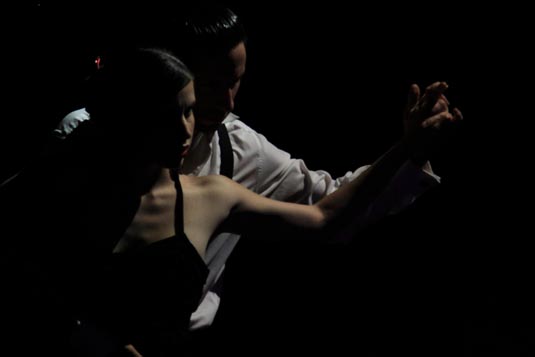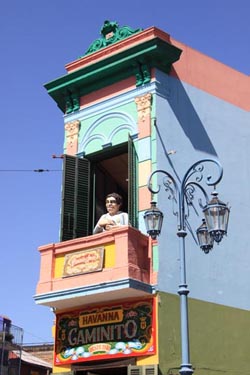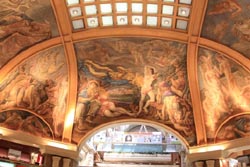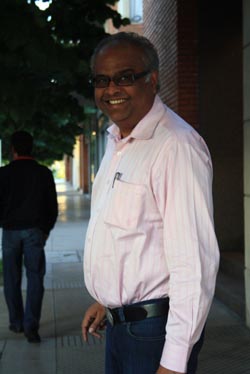 |
Home | Charity | Feedback |
Argentina: Buenos Aires, Iguazu, Ushuaia
Buenos Aires, Argentina: Spirit of the Tango by Prakash Bang, Editor in Chief  Rightly known as the Paris of South America, the city of Buenos Aires oozes of old world charm. The affluence of the good old days becomes obvious by merely observing the design of the city, its various public buildings, structures, monuments, palatial homes, fountains & parks. We reached Buenos Aires international airport at 5:30 in the evening. By 7 we were in our rooms at Hotel Madero in the district of Port Madero - once the port serving Buenos Aires. From my room on the 6th floor, I could see the massive River La Plata. Actually, I thought it was an ocean. And why not? The river is 45 kms wide at its narrowest point and is 245 kms wide at the largest! The ocean is 400 kms away from Buenos Aires. The river and the canal made it possible for smaller ships to unload and load their wares. However, as container ships came into vogue, Port Madero was abandoned. It was a dead area. The military were about to destroy the docks but resistance from the local authorities prevented it. A local architect, Madero, redesigned the area by converting dock buildings into convention centre and institutions. The area around was developed by putting up residential buildings, restaurants and entertainment facilities. Today, Port Madero ranks amongst the up market neighbourhoods of Buenos Aires.  When in Buenos Aires, an evening must be reserved to see the Tango show. There are many places offering Tango shows and would cost around US$80 per head which includes pick-up and drop service from the hotel, a sumptuous 3-course dinner with wine and the show of course. My friend and a good tour guide Cesar Simoni suggested attending the Tango show at Esquina Carlos Gardel. In Buenos Aires, of the last years of the 19th century Tango was getting into people's souls, mixing slowly with the natives and of the immigrants. The neighbourhood of Abasto, named after the supplies market witnessed the birth of Carlos Gardel that would become, here and abroad, the idol of Tango. Today, his birthday is celebrated as Tango day. Esquina Carlos Gardel is a theme restaurant that truly captures the spirit of fine salons of the bygone era, great cuisine and the haunting melody and steps of Tango.
When in Buenos Aires, an evening must be reserved to see the Tango show. There are many places offering Tango shows and would cost around US$80 per head which includes pick-up and drop service from the hotel, a sumptuous 3-course dinner with wine and the show of course. My friend and a good tour guide Cesar Simoni suggested attending the Tango show at Esquina Carlos Gardel. In Buenos Aires, of the last years of the 19th century Tango was getting into people's souls, mixing slowly with the natives and of the immigrants. The neighbourhood of Abasto, named after the supplies market witnessed the birth of Carlos Gardel that would become, here and abroad, the idol of Tango. Today, his birthday is celebrated as Tango day. Esquina Carlos Gardel is a theme restaurant that truly captures the spirit of fine salons of the bygone era, great cuisine and the haunting melody and steps of Tango.
For our flight back home we had to be at the Ezeiza international airport by 4:30 in the afternoon. That gave us almost a day to explore the City of Buenos Aires. Our first stop was La Boca neighbourhood. After a picture stop at a Russian Orthodox Church and at the famous C A Boca Juniors Stadium (Madonna with the No 10 jersey played for this club) we headed towards a very picturesque and colourful street Caminito, whose architectural characteristics and customs reflect the influence of the European citizens that came to the shores in the last years of the 19th century. Today the street is home to road side artists, curio shops and restaurants. I was intrigued by large waving statues in many balconies - reminding the passersby of the famous Evita (Eva Peron) - waving to 3 million commoners from her royal residence on a particular day in history.  We then moved towards San Telmo one of the oldest neighbourhoods in Buenos Aires. Inhabited by the aristocratic families of the 19th century, that then moved into the Northern neighbourhoods due to a devastating yellow fever epidemic. Most of these houses converted into conventillos - each one shared by many poor families. San Telmo keeps most of its colonial houses and cobbled streets untouched. If you happen to be in Buenos Aires on a Sunday, make it a point to visit the very famous antique fair that's held in Plaza Dorrego. The area also has many Tango houses and restaurants. As we moved towards the city centre - Centro neighbourhood we crossed narrow lanes one of which had St Peters San Talemo Church.
We then moved towards San Telmo one of the oldest neighbourhoods in Buenos Aires. Inhabited by the aristocratic families of the 19th century, that then moved into the Northern neighbourhoods due to a devastating yellow fever epidemic. Most of these houses converted into conventillos - each one shared by many poor families. San Telmo keeps most of its colonial houses and cobbled streets untouched. If you happen to be in Buenos Aires on a Sunday, make it a point to visit the very famous antique fair that's held in Plaza Dorrego. The area also has many Tango houses and restaurants. As we moved towards the city centre - Centro neighbourhood we crossed narrow lanes one of which had St Peters San Talemo Church.
We next made a stop at Plaza de Mayo Square, a location of resonant politic manifestations where the second and definitive foundation of Buenos Aires took place in 1581. The Piramide de Mayo (Pyramid of May) that rises in the centre of the square was the first national monument inaugurated in 1811. It is surrounded by Government House, the Cabildo (old City Hall) which dates back to 1754 and the cathedral. During the freedom struggle, it is said that hundreds of young men went missing. Their mothers wore scarves with the names of their sons embroidered on their scarves. Painting of scarves adorns the footpaths around the Pyramid of May. The Avenida de Mayo (May Avenue) starts from this square and is home to interesting set of buildings of varied styles that reflect the affluence and the diversity of its inhabitants.  Moving towards Recoleta neighbourhood, we crossed the famous Obelisk standing tall on the 9 de Julio Avenida (9th July Avenue) - arguably the world's widest avenue - with 8 lanes dotted by green squares and old leafy trees. The Obelisk is indeed the symbol of the city. Nearby stands the Colon Theatre whose perfect acoustic made it one of the best Opera Houses in the world. At the time of my visit, the theatre was under renovation.
Moving towards Recoleta neighbourhood, we crossed the famous Obelisk standing tall on the 9 de Julio Avenida (9th July Avenue) - arguably the world's widest avenue - with 8 lanes dotted by green squares and old leafy trees. The Obelisk is indeed the symbol of the city. Nearby stands the Colon Theatre whose perfect acoustic made it one of the best Opera Houses in the world. At the time of my visit, the theatre was under renovation.
Recoleta is the most sophisticated neighbourhood of Buenos Aires. Even a cemetery out there commands a premium. Only the very rich can have a spot. I was amazed with my visit to the cemetery. Rich families have their mausoleums out there. When a member of the family dies, he or she is buried in there. Unlike what you think, the bodies, after embalmment, are sealed in wooden caskets. These caskets are then placed on racks. You can actually see the caskets. Mausoleums of varied designs stand next to each other. Someone very rightly said, it's a designer town with quiet neighbours! A visit to the Recoleta cemetery is a must. Within walking distance are Church of our Lady of Pilar, Recoleta Cultural Centre, the Buenos Aires Design shopping mall and the Palais de Glace Exhibition Centre. With a brief lunch break we moved towards Palermo neighbourhood and its elegant residences and the 3 de Feberero Park which includes the Rosedal, the Japanese Garden, the Zoo, the Botanical Garden and the Planetarium. It was 2 PM. Time to move towards the international airport but not before a 30 minute break at Buenos Aires most happening shopping mall - Galerias Pacifico. At 4:15 we were at the Ezeiza International airport. 20 hours of flying and 4 hours of waiting would take us home. Buenos Aires Image Gallery  Photo viewer Photo viewer
|
|
|
Home |
Charity |
Feedback
Privacy Policy | Terms of Usage © YoGoYo.com. All rights reserved. |

































































